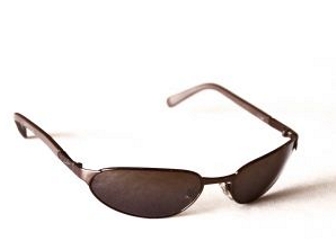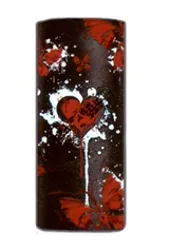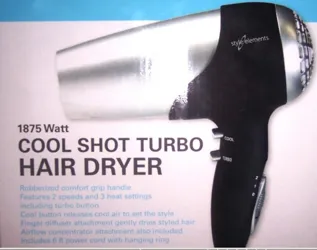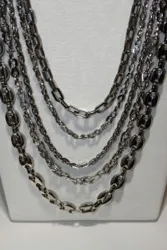
14 Sun Safety Tips For Hair And Beauty
14 Sun Safety Tips For Hair And Beauty
 Sun safety is no longer just about preventing straw-like strands, lobster red skin or burnt scalps. Sun safety is much more.
Sun safety is no longer just about preventing straw-like strands, lobster red skin or burnt scalps. Sun safety is much more.
It's about preventing deadly skin cancer which is now epidemic. Currently one in five Americans are discovered to have some form of skin cancer in their lifetime.
Even though the dangers of continued sun exposure have become well-known to 94 percent of the public, studies have shown that only one in five people actually wear sunscreen on a daily basis.
(Image of sunglasses courtesy of Haap Media Ltd., - All Rights Reserved)
Listed below are some of the top ten Sun Safety Tips:
Tip #1 - Learn label lingo and make informed sun protection product choices for you and your family:
- SPF stands for sun protection factor and is listed by number.
- UVA stands for ultraviolet A rays. UVA are known as aging rays tied to long term skin, hair and overall serious damage.
- Check the active ingredients on every sunscreen label for UVA age-blocking ingredients including titanium dioxide, zinc oxide and avobenzone related components.
 - UPF (ultraviolet protective factor) is attached to clothing or other items which offer a protection factor.
- UPF (ultraviolet protective factor) is attached to clothing or other items which offer a protection factor. - The Federal Trade Commission known as the FTC is tasked with providing sun safety related information to consumers.
- Federal Food and Drug Administration is known as the FDA and is the agency which protects consumers with food and drug related information.
particular plants.
(Image courtesy of Haap Media Ltd., - All Rights Reserved)
Tip #2 - Use sunscreen every single day come rain or sunshine
Studies have shown sun exposure can occur even when there is a thick cloud covering or during rain. Due to the thinning of the protective ozone layer over the years, overexposure to the sun can occur more easily than ever before.
Tip #3 - Use proper amount of sunscreen for full body coverage
Some sun worshippers make the mistake of skimping on sunscreen. Studies have shown that the average-sized body requires approximately a shot glass worth of sunscreen to achieve maximum coverage.
 If you're prone to getting burnt consider applying additional sunscreen to your face after applying sunscreen to your body.
If you're prone to getting burnt consider applying additional sunscreen to your face after applying sunscreen to your body.
(Image courtesy of Haap Media Ltd., - All Rights Reserved)
Tip #4 -Slather on sunscreen before you put on your clothes, not after
Dermatologists suggest you apply your sunscreen before you put on your clothes, not after. Why? Working around your clothes will make you more likely to miss a spot or even several.
Always slather at least a shot glass's worth of a broad-spectrum sunscreen that's at least SPF 30+ for your body. Consider your face as a separate area requiring coverage. Add a shot glass full of SPF for your face.
Tip #5 - Buy new sunscreen every year
The sunscreen product industry is constantly improving formulations for added sun exposure protection. It's important to update your own sunscreen formulas to encompass the latest offerings.
Make sure you always purchase new sunscreen formulas every year. Throw out any sunscreen formulas which are old or out of date.
Tip #6 - Re-apply sunscreen formulas
 Re-applying your sunscreen at least every two hours is crucial to maintain sun protection. Always re-apply sunscreen to the entire body after swimming, sweating or getting wet in any manner.
Re-applying your sunscreen at least every two hours is crucial to maintain sun protection. Always re-apply sunscreen to the entire body after swimming, sweating or getting wet in any manner.
Remember that SPF needs an average of 20 minutes to sink in before your skin is completely protected from UV rays.
(Image courtesy of Haap Media Ltd., - All Rights Reserved)
If you wait too long, you might run the risk of having no sunblock coverage for a period of time while you're outdoors.
Tip #7 - Take advantage of protective clothing
Protective clothing also can play a major role in a sun protection plan. The Federal Trade Commission (FTC) advises wearing sun-protective fabrics which have a tighter weave or knit and are usually darker in color.
The clothing’s label should also list the UPF (ultraviolet protective factor) value. And, your eyes are extremely sensitive to the sun, so always wear UV protection sunglasses.
Tip #8 - Select star rated sun protection
The Food and Drug Administration has announced it will soon start using a star system to rate sunscreens. A zero rating means no protection, while four stars would be the highest level of protection.
Once the system is in place be sure to take advantage of this new rating system to get the best products possible.
Tip #9 - Add Vitamin C under sun screen
Opt for additional sun protection by applying a 20 percent concentration of topical Vitamin C to your skin under your sunscreen to boost the immune defense of your skin cells against UV damage as well as the appearance of skin spots.
 Tip #10 - Use a self-tanner to achieve a safe glow
Tip #10 - Use a self-tanner to achieve a safe glow
Opt for a fragrance free self-tanner formulation that incorporates an AHA for better penetration. For face, alternate your regular moisturizer and a self-tanner every other night for a natural glow.
(Image courtesy of Haap Media Ltd., - All Rights Reserved)
For the body, be careful to avoid elbows, knees and heels so you look natural and the tanner doesn’t darken the folds.
Tip #11 - Protect your scalp, parts and hairline
Don't forget protection for your scalp. Parts on the scalp can actually get burnt. Use a spray sunscreen applied liberally all around the head, scalp, parts and hairline. If you have a tendency to experience scalp burns you may wish to consider wearing a hat as much as possible when out in the sun.
Tip #12 -Avoid getting sunscreen too close to the eyes
Sunscreen can really sting when it's applied too close to the eyes. However, the thin skin around your eyes needs extra protection. Try using a special sunblock eye stick or sun protection powders to get close to the eyes without stinging.
Tip #13 -Remember that UV exposure from protective sunglasses can be amplified
 It's always important to have complete sunblock coverage to the eyes since UV protective sunglasses can amplify the reflection off the glasses.
It's always important to have complete sunblock coverage to the eyes since UV protective sunglasses can amplify the reflection off the glasses.
Tip #14 -Fight the sun from the inside out
No matter how careful you are with sunblocks, sunscreens, wearing hats or practicing good sun care the sun can always find a way in.
One way to undertake a complete sun protection program is to take supplements designed to boost your protection. Look for sun protection pills with polypodium leucotomos which is an extract from a fern.
Studies have shown that this ingredient helps guard skin from UV damage. It also has been proven to decrease redness after sun exposure.
Take the recommended dose in the morning if you know you'll be outside for long periods of time.
More Information
Please follow me on Twitter at: http://Twitter.com/HairBoutique. I look forward to meeting new people from all walks of Twitter and learning from their Tweets. Visit us at Hairboutique.com located at: http://www.HairBoutique.com, on Facebook, MySpace and YouTube.
Thank you for visiting us at The HairBoutique Blog and for leaving your comments. They are very much appreciated. We apologize in advance but must remove any direct advertisements or solicitations.
Social Media Network Information
Please follow us on Twitter at: https://Twitter.com/HairBoutique. I look forward to meeting new people from all walks of Twitter and learning from their Tweets.















